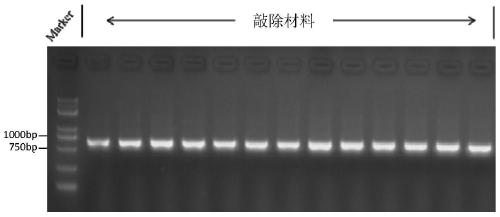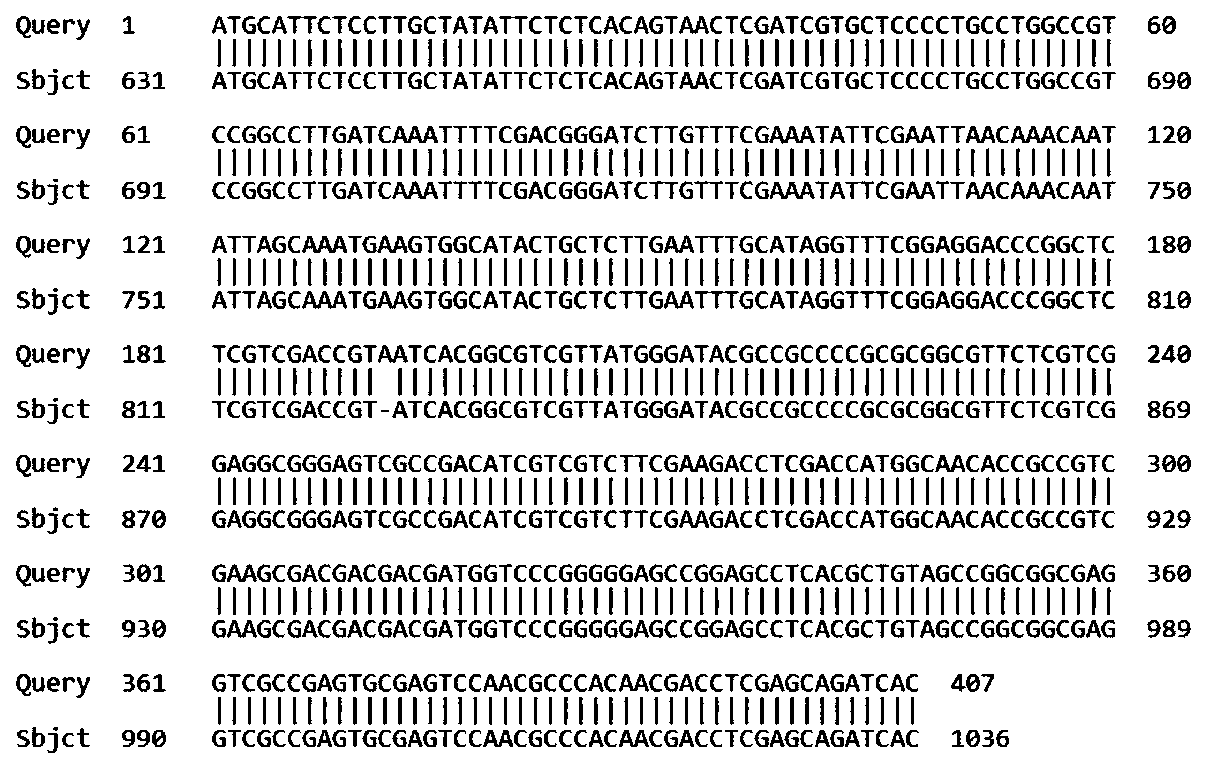Application of transcription factor gene OsBEAR1 of oryza sativa to elongation of bred coleoptiles or varieties of oryza sativa suitable for direct sowing in fields
A technology of rice transcription factors and coleoptiles, applied in the fields of application, genetic engineering, plant products, etc., can solve the problems of limited application, unfavorable rice germination, hypoxia, etc., and achieve the effect of improving germination and emergence rate
- Summary
- Abstract
- Description
- Claims
- Application Information
AI Technical Summary
Problems solved by technology
Method used
Image
Examples
Embodiment 1
[0028] Embodiment 1: Rice OsBEAR1 Knockout
[0029] one, OsBEAR1 Construction of knockout vector
[0030] Using the online tool (http: / / skl.scau.edu.cn / ) from OsBEAR1 Select the target sequence to be knocked out from the specific segment of the gene sequence: "5'-GGCTCTCGTCGACCGTATCA-3'" (SEQ ID NO: 4).
[0031] Select the sgRNA expression vector "pYLsgRNA-OsU6a" with the promoter OsU6a, and synthesize the linker primer corresponding to the target sequence:
[0032] Upstream primer: 5′-GCCGGGCTCTCGTCGACCGTATCA-3′
[0033] Downstream primer: 5′-AAACTGATACGGTCGACGAGAGCC -3′
[0034] The two primers are annealed to form small DNA fragments.
[0035] Use primers UF: 5′-CTCCGTTTTACCTGTGGAATCG -3′ and gR-R: 5′-CGGAGGAAAATTCCATCCAC-3′ to perform inverse PCR with the pYLsgRNA-OsU6a vector as a template to linearize it. The linearized pYLsgRNA-OsU6a was digested with the restriction endonuclease Bsa I, then the annealed DNA fragment of the target sequence with the linker was add...
Embodiment 2
[0059] Example 2: OsBEAR1 Coleoptile Growth Experiment of Knockout Plants
[0060] The flow process of the growth experiment used in the present invention is: with acceptor rice (WT) and OsBEAR1 The CRISPR-knockout rice (CRI-BEAR) was used as the experimental material. The plump and good seeds were first baked at 42°C for 24 hours, then soaked in distilled water at 37°C for 12 hours, and then the seeds were germinated in a semi-exposed shallow water layer for 2 days. Transfer the germinated seeds to 24 degrees, and cultivate them with distilled water in a photoperiod culture environment with 13 hours of light and 11 hours of darkness, observe and take pictures on the third day of photoperiod culture, randomly select 8 plants from each material, and record the coleoptile phenotype ( Figure 4 ), the corresponding coleoptile length statistics such as Figure 5 , the average length of coleoptiles of recipient rice (WT) was 0.61cm, and the average length of coleoptiles of knock...
PUM
| Property | Measurement | Unit |
|---|---|---|
| length | aaaaa | aaaaa |
Abstract
Description
Claims
Application Information
 Login to View More
Login to View More - R&D
- Intellectual Property
- Life Sciences
- Materials
- Tech Scout
- Unparalleled Data Quality
- Higher Quality Content
- 60% Fewer Hallucinations
Browse by: Latest US Patents, China's latest patents, Technical Efficacy Thesaurus, Application Domain, Technology Topic, Popular Technical Reports.
© 2025 PatSnap. All rights reserved.Legal|Privacy policy|Modern Slavery Act Transparency Statement|Sitemap|About US| Contact US: help@patsnap.com



